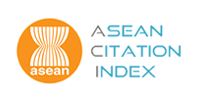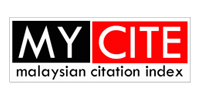Polysulfone (Psf) Mixed Matrix Membrane incorporating Titanium Dioxide (TiO2)/Polyethylene Glycol (PEG) for the removal of copper
DOI:
https://doi.org/10.58915/ijneam.v17i4.1299Keywords:
Copper, Mixed matric membrane, Polysulfone, UltrafiltrationAbstract
The global increasing contamination of water resources with toxic metals such as copper (Cu), poses severe threats to human health and aqueous ecosystems. Therefore, the ultrafiltration mixed matrix membranes (UF MMMs) possess an applicable approach for the removal of copper ions. This novel fabricated technology can be applied in various wastewater treatment systems for the removal of heavy metals, especially copper. MMMs were fabricated by blending polysulfone (Psf) with additives into the dope solution via the phase inversion method by incorporating titanium dioxide (TiO2) and polyethylene glycol (PEG) in Psf MMMs. Seven Psf MMMs samples labelled M0 to M6, each with its own formulation, were prepared and tested for density, porosity, and degree of Cu retention. MMMs were further characterized via Fourier transform infrared spectroscopy (FTIR), which revealed the range of the IR spectrum of Psf polymer membrane from 1319 cm-1 to 1600 cm-1, 1650 cm-1 to 3400 cm-1 for PEG, and 800 cm-1 to 3600 cm-1 for TiO2 NPs. As for the scanning electron microscopy (SEM), M6 (Psf/TiO2/PEG 6000) was found to be the most dense and highest porous morphology asymmetric Psf MMM. The retained percentage of Cu and flux for M6 attained the highest value of 80.3% and 136.99 L/m2 .h respectively, whereas for the neat Psf membrane, M0 exhibited the lowest retained percentage of Cu and flux, about 25.8% and 61.64 L/m2.h. The inclusion of pore former and additives has shown an improvement of 54.5% in the copper rejection. Moreover, M6 displayed the highest antifouling properties compared to other Psf MMMSs. This study proves that PEG and TiO2 additives have significant potential to improve membrane performance due to the highest percentage of Cu retained on the surface of the membrane as adsorptive separation on Psf MMMs.

















